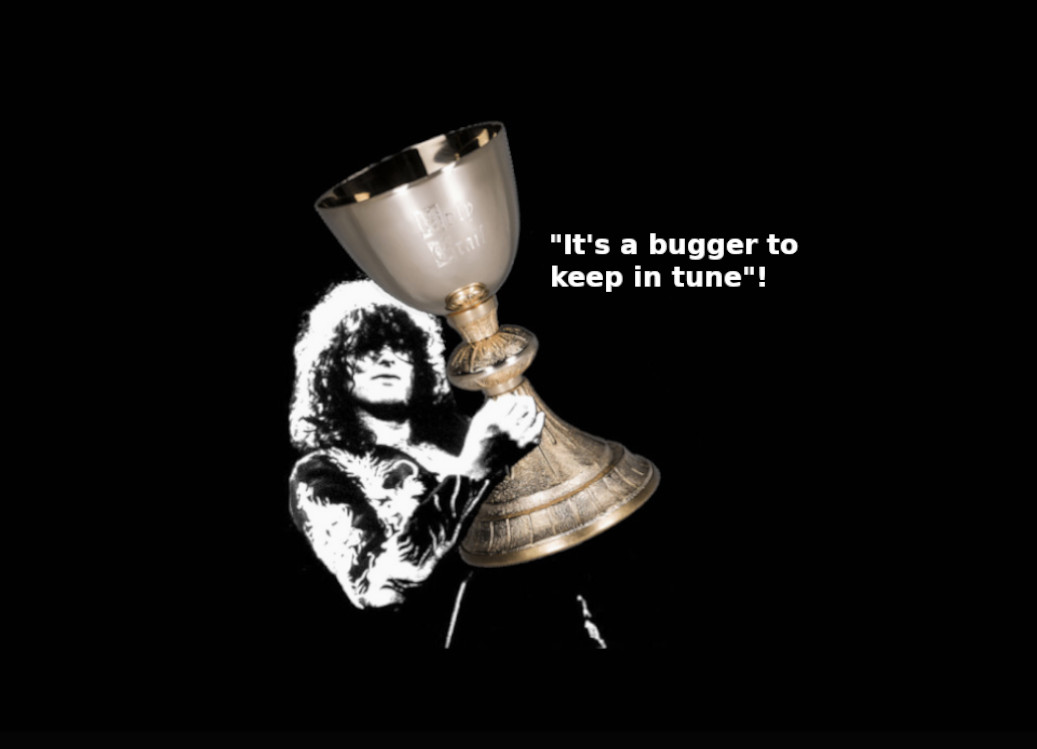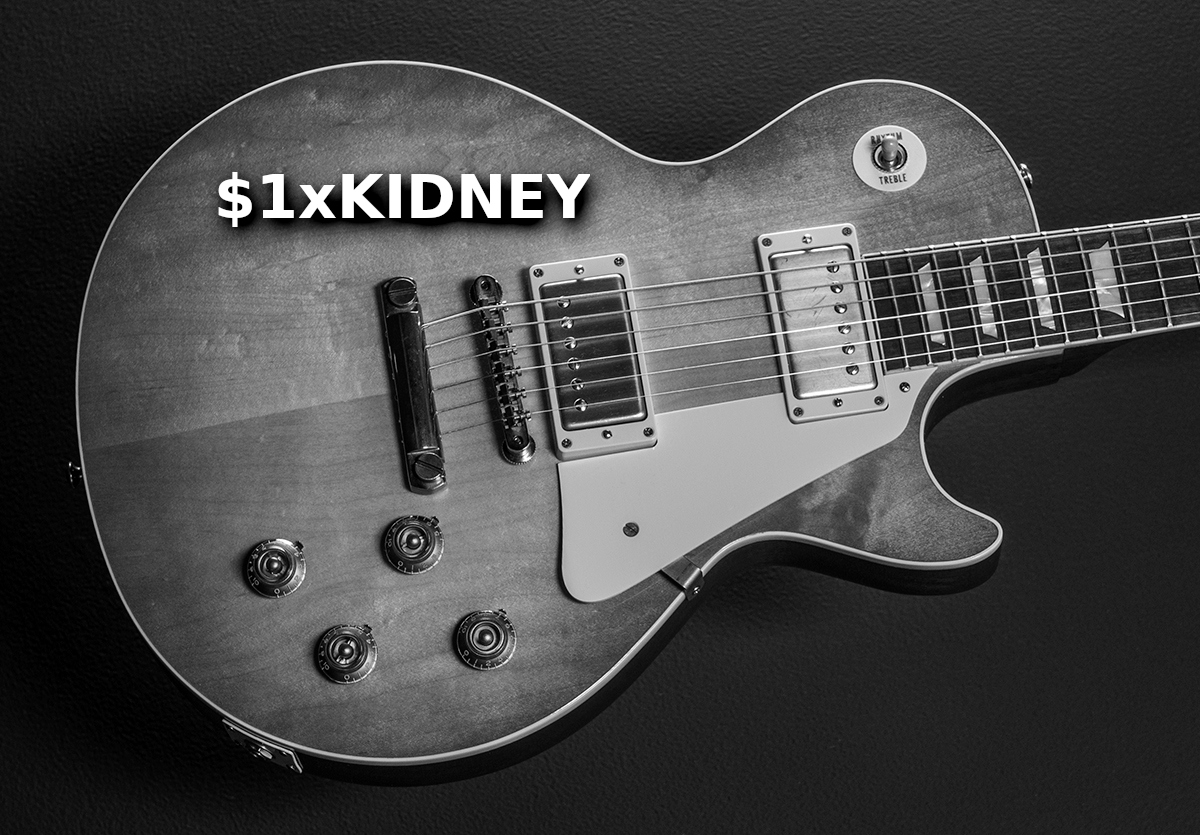
The Electric journey to Rock’n’Roll.
Lap steel and jazz guitarists such as Charlie Christian were the first pioneers in amplification using new pick up and amplifier technology that had been developed in the ’30s and ’40s.
Big band music had been the mainstay of popular music during the second world war and shortly after with guitars only playing a minor role.
But with the development of electric guitars and the dawn of a new post war youth culture guitars became the symbol of rebellion for the first type of music that truly belonged to the kids – Rock’n’Roll.
Rock’n’Roll was born out of the social and economic effects of the second world war.
The Big bands broke up and were replaced with smaller simplistic amplified groups.
With it’s new amplified power the guitar now emerged as a lead instrument and took center stage.
Buddy Holly, Chuck Berry, and Bo Diddley helped initiate this paradigm shift in music that was a blend of white and black music based heavily on rhythm and blues turbocharged with electric guitars and pop sensibilities.
The Rock’n’Roll years that were to follow would be responsible for the ultimate classic guitar models that simply have not been surpassed.
These guitars designs made the blueprint for all electric guitars as we know them today and as a result, these original guitars from the first few years of production have become the holy grail of guitars.
1949
Gibson had been the main brand for guitarists highly influenced by proto jazz guitar hero Charlie Christian and his use of his Gibson ES-150.
But now the just as the embryo of Rock’n’Roll was developing, Fender, a new brand with a cheaper bolted on neck were laying the foundations for joining Gibson as the two household names that everybody associates with electric guitars.
In 1949 we saw the birth of what we now refer to as the “Tele” with Leo Fender’s 1949 Prototype.

1950
In 1950 Leo Fender released his updated version and came out with the Fender Esquire, the design had the bolted on neck rather than use the traditional dovetail joint. This made the guitar easier and cheaper to make, customize, and repair.
This design was the first that made bolt on neck, solid body guitars viable in the marketplace for working class musicians.
The one pick-up Esquire was joined by the two pick-up Broadcaster later that year.
1951
The Broadcaster was renamed the Telecaster following the result of legal action from the Gretsch company as they already had the Broadkaster name registered for a line of drums. 
1952
Gibson wasn’t to be left behind in the solid-body market and went back to Les Paul who they had previously rejected with his ‘Log‘ guitar to gain his design input and his considerable commercial star name endorsement.
Together they come up with their version of the solid-body Stradivarius, and the Gibson ‘Les Paul’ was born.

The Goldtop version sold for $210, about $20 more than the Telecaster.
While Les Paul was at a peak in 1952 with his Galloping Guitars EP, his stardom was soon to fade as new country-blues hybrids called Rockabilly and Rock ‘n’ Roll became the next big thing.
1954
It is generally accepted by historians that Rock n’ Roll was born in 1954 and Gibson kept innovating guitar design adding the now generic Tune-o-matic bridge to the new Les Paul Custom which was dubbed the ‘Black Beauty’ to improve the intonation and string dampening capabilities.

The Fender ‘Stratocaster’ came out in 1954, it’s unique tone came from three single coil pickups and it’s refined synchronized tremolo.

Buddy Holly was one of Rock’n’Roll’s first superstar musicians and his use of the Stratocaster propelled Fender into the spotlight.
Many people believe Leo Fender borrowed the famous scroll headstock design straight from his fellow friend and guitar designer Paul A. Bigsby.
Paul A. Bigsby did introduce the scroll headstock for the electric guitar before Leo Fender but he didn’t necessarily invent it.
It is thought that both Leo and Paul were just honoring the tradition of earlier European guitars that mimicked the scroll of a violin headstock and may have even discussed this in their many guitar design conversations. This could be a tale of two guys centering on a similar idea around the same time.
1955
Another influential partnership between the manufacturer and musician was between Gretsch and Chet Atkins.
The first Chet Atkins signature guitar was the eye catching Gretsch ‘6120′ launched in 1955, featuring a campfire orange finish, kitschy G logo, and engravings of cowboy motifs on the fretboard like steer heads and cactus.

Chet Atkins hated the look but reluctantly used it, and it was a success, outselling Gibson’s concurrent ES-175.
1956
Fender introduced new less expensive student models, including the Musicmaster and Duo-Sonic.
1957
Seth Lover designed and invented humbucking pickups in 1955. These legendary early ‘Patent Applied For’ or P.A.F pickups were added to the Gibson Les Paul in 1957.
The result was a warm, dark, bass-heavy sound that would differentiate Les Pauls from the brighter Fender sound, and as the name implied they canceled the 60-cycle hum associated with single coil pickups.
1958
The Gibson Les Paul guitar saw its first major design change. A new model called the Les Paul Standard.
Over time this model and year have become the holiest of Holy Grail of guitars.

It retained most of the features of the ’57 Goldtop Les Paul including the newly released P.A.F humbucking pickups and for the first time came in the iconic cherry-red sunburst finish.
Gibson marketed the Les Paul Standard originally to jazz players, wrongly assuming that Rock ‘n’ Roll was going away, a mistake that would cost them dearly.
In 1958 Gibson also introduced the all time classic semi-acoustic ES-335.

The world was changing and Gibson was desperate to show that they could be modern and futuristic. The blueprint for Heavy Rock and Metal guitars of the future was made with a trio of ultra-Modernist designs.


The third design called the Moderne was not put into production with a limited run until 1982.
Fender was also still aiming their guitars at jazz players resulting in the Jazzmaster in 1958 which incorporated modern automobile curves and detailing keeping it up with the trends.

1961
Unbelievably Gibson stopped production of the Les Paul guitar in 1961.
Due to a lack of sales and interest from Jazz guitarists to whom the guitar was marketed meant only around 1,700 Les Paul Standards were originally made and it was considered a flop.
This low production number along with the even lower ones for the Explorer and Flying V further cemented their place as the most iconic and collectible Holy Grails of all electric guitars.
Music tastes had now fully shifted away from the jazzy big band sounds and the new cultural youth movement wasn’t into guitar designs from their parent’s generation, deeming them old fashioned and out of date.
A huge growing market had evolved and Fender with their cheaper less jazz orientated Telecasters and Stratocasters had taken a big part of Gibsons sales.
In an attempt to rectify this they introduced the Gibson Les Paul SG, with a more modernist look and simpler body construction that significantly reduced production costs to help them compete.

Les Paul had no input in its design but he reluctantly posed within the catalog with it for contractual reasons.
Eventually Les asked for his name to be removed and by the end of 1963 when the stock of ‘Les Paul’ truss rod cover plates was exhausted it was.
1962
The Jaguar was released in time to join the Jazzmaster and Stratocaster to become the guitars that dominated the new wave of popular surf music 1962 – 1964.

1963
Fender’s bid to become the world’s largest guitar brand would see them make the most controversial decision in their history.
Find out more in the next part!
Keep your eye out for our next installment ‘History of the Electric Guitar – The Swinging Sixties’ so you can talk proper ‘Guitar Bollocks’ with your friends.
Better still SUBSCRIBE and don’t miss anything with your monthly update and very special offers!
Thanks again for Dr. Fester at his great Music Blog Fast ‘n’ Bulbous for his contribution and inspiration
Please contact us if you have any ‘Guitar Bollocks’ to say or would like to contribute at guitarbollocks@gmail.com










